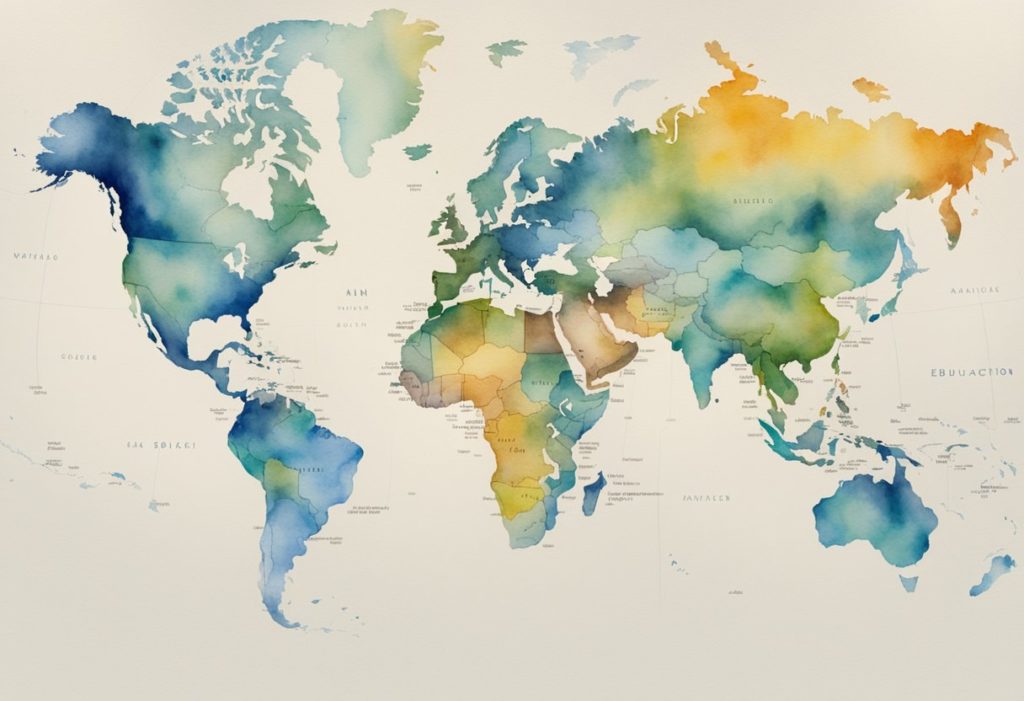The pursuit of higher education can be quite costly, leading many students to accumulate significant debt during their college years. However, some countries around the world have adopted policies to offer free college education to their citizens, aiming to reduce the financial burden and promote accessible education for all. In these nations, tertiary education is subsidized by the government, making it more affordable and providing students with greater opportunities for personal and professional development.
Understanding which countries offer free college is essential for those who are considering studying abroad and seeking options with fewer financial restrictions. This article aims to provide an overview of the countries that offer free higher education and the implications of these policies on the global stage. By examining the various funding models, eligibility criteria for international students, and potential barriers and limitations, readers can gain a deeper understanding of the impact and scope of free college education around the world.
Key Takeaways
- Some countries offer free college education, reducing financial barriers for students.
- Funding models and eligibility criteria vary among countries with free higher education.
- Barriers and limitations exist in free college systems, affecting accessibility and global implications.
Understanding Free College

Free college is an educational model wherein certain countries offer higher education to their citizens without charging tuition fees. This system aims to reduce financial barriers for students and enable broader access to higher education, thereby promoting social and economic mobility. In such countries, college subsidies are often funded through taxes and other governmental resources.
Some of the countries that offer free college or tuition-free higher education include Germany, Finland, Norway, Sweden, and Slovenia. These European countries champion the idea that higher education should be accessible to all, regardless of income levels or social status. Their higher education systems are often characterized by strong state support, with government budget allocations covering the majority of costs.
In Germany, public universities are tuition-free for both domestic and international students, making it a popular destination for higher education. Students may only be required to cover nominal administration fees and living expenses. Similarly, in Nordic countries such as Finland, Norway, and Sweden, higher education institutions do not charge tuition fees for domestic and European Union (EU)/European Economic Area (EEA) students, further promoting the attainment of college degrees.
Slovenia, another European country with free college, allows domestic, EU/EEA, and even some non-EU students to enroll in its public universities without paying tuition fees. However, like in Germany, there may be small administrative charges and living costs to bear.
It is important to note that despite offering free college, these countries may have different education policies and frameworks in place to ensure quality and equity within their respective systems. The benefits and challenges associated with this approach to higher education can be seen through careful examination and comparison of these nations’ policies and outcomes.
Free College: A Global Analysis

Many countries around the world have incorporated free college education into their systems, particularly in Europe. This approach aims to provide equal opportunities for all, regardless of their financial background. In Europe, countries such as France, Switzerland, Poland, Spain, Austria, Luxembourg, and Slovenia offer free or low-cost higher education to their citizens and, in some cases, international students.
The United States, on the other hand, does not have a nationwide free college system. Instead, college tuition costs vary depending on the institution, and many students rely on scholarships, loans, or grants to cover their fees. However, some states and individual institutions have introduced free college programs or tuition-free initiatives on a smaller scale.
In Latin America, countries like Brazil, Argentina, and Panama offer free or low-cost higher education, while in others, such as Chile, students have advocated for the implementation of such policies. Although the concept of free higher education has diminished in some parts of the region, it remains an important component of social equity and access to opportunities in these countries.
Outside of Europe and the Americas, other countries such as Turkey and China have also implemented free or low-cost higher education policies. These initiatives aim to provide a well-educated workforce and contribute to national economic development. In African countries like Kenya and Egypt, government efforts to increase access to education include the provision of free or low-cost tertiary education, although progress may be slow due to financial and resource constraints.
It is essential to consider that while “free” higher education might eliminate or substantially reduce tuition fees, there are still other costs associated with attending higher education institutions. These expenses may include accommodation, books, materials, or other living expenses, which can still create barriers for lower-income students. Despite these obstacles, the push for free college education remains a vital topic of discussion among governments and educational institutions worldwide.
In conclusion, the implementation of free college education varies across different countries and regions. OECD countries in Europe tend to have more comprehensive free or low-cost higher education systems, while countries in other parts of the world, including the United States, Latin America, Africa, and Asia, either offer some form of free college or continue to strive for increased accessibility to higher education for their citizens.
Countries with Free College

Several countries around the world offer free college education to their citizens and, in some cases, even international students. These countries understand the importance of higher education and have made efforts to remove financial barriers for students seeking to attend college. Notable examples include countries such as Norway, Denmark, Sweden, Germany, Greece, Finland, Iceland, Czech Republic, Turkey, Austria, Luxembourg, and Slovenia.
Scandinavian Countries
In Scandinavian countries like Norway, Denmark, Sweden, and Finland, higher education is accessible to all citizens, tuition-free. International students can also benefit from their free college systems, although the cost of living in these countries can be high. For example, Norway offers a tuition-free education to both domestic and international students studying at public universities.
Germany
Germany is another country known for providing free college education. While there might be a small fee for administration or semesters, tuition is generally free for both national and international students. This policy allows students to pursue higher education without accumulating a significant amount of debt.
Greece
Greece also offers free education at public universities for both domestic students and EU/EEA students. However, non-EU students may be required to pay a nominal fee. The quality of education in Greece is well-regarded, but the country is known for having limited resources due to its economic situation.
Iceland
Another country offering free college education is Iceland, where both citizens and international students can access tuition-free education at public universities. However, students should be aware of the high cost of living in this country, as well as the language requirements, as most courses are taught in Icelandic.
Czech Republic
The Czech Republic provides free college education for its citizens and even international students who choose to study in the Czech language. English taught programs might have tuition fees, but they are generally more affordable than in other countries.
Turkey
In Turkey, public universities offer free education for their citizens. However, international students may be required to pay tuition fees, which are relatively affordable when compared to other countries.
Austria
Austria offers free education for EU/EEA students, while students from other countries may be required to pay a small fee. The country’s higher education system is distinguished by its strong focus on research and innovation.
Luxembourg
Luxembourg provides free college education for its citizens, while international students may be charged tuition fees. However, the fees are generally lower compared to other European countries.
Slovenia
Lastly, Slovenia offers free college education for its citizens, while EU/EEA students may also have access to tuition-free education. Non-EU students may be required to pay fees, but they are quite affordable.
Considerations for Choosing a Study Destination
While many countries offer free college education, students should consider factors such as the cost of living, language requirements, and the quality of education when choosing their study destination. Nonetheless, these countries demonstrate a strong commitment to making higher education accessible and affordable for all.
Funding and Costs

In some countries, higher education is offered free of charge to students. The funding for free college usually comes from taxpayers and government subsidies. Offering free college education can have both positive and negative implications on the economy and society. The primary challenge with free education is the high cost for taxpayers, as explained in an article discussing how much free college would cost taxpayers.
Public universities and colleges that provide free tuition often rely on government support. However, it is essential to consider that while tuition fees might be waived in some cases, other expenses such as living expenses and books still need to be covered. Financial aid options like scholarships, grants, and loans are often available to help students pay for these additional costs.
Countries that offer free tuition for students usually have a system in place to cover any costs associated with attending public universities. In these countries, students might benefit from a lower financial burden while pursuing higher education, but the government and taxpayers bear the financial responsibility. It is crucial to strike a balance between providing affordable access to education while maintaining a sustainable funding model for universities and colleges.
In conclusion, free college education’s funding and costs are dependent on the system implemented in each country, and there is a myriad of factors at play. Tuition fees, financial aid, living expenses, and the involvement of taxpayers all contribute to the overarching framework of free college education.
Eligibility and Access for International Students

In recent years, the availability of free college education has become more prominent in several countries, particularly in the European Union and the European Economic Area. International students seeking free higher education opportunities should be aware of the eligibility criteria and access provisions in these countries.
Many European countries offer free tertiary education to both domestic and international students. Notable examples include Germany, Finland, Norway, and Sweden. In these countries, public universities don’t charge tuition fees regardless of the student’s nationality. However, administrative fees, such as enrolment or semester fees, may still apply and vary by institution.
To access free higher education in these countries, international students are often required to demonstrate proficiency in the language of instruction. While English is widely spoken in Europe, some university programs may use the local language as the primary language of instruction. In such cases, students would need to provide proof of language proficiency, usually through standardized test scores like TOEFL or IELTS for English, or specific language exams for other languages, e.g., German or French.
Eligibility for free higher education can also depend on the student’s country of origin. Students from within the European Union or the European Economic Area often have the same rights and access to higher education as local citizens. On the other hand, students from other regions may have certain restrictions, such as limited access to certain programs, scholarships, or financial assistance. It is crucial for international students to research the specific eligibility criteria for their chosen university and country before starting the application process.
Moreover, it is crucial to note that living expenses and health insurance are not covered by free tuition. International students must ensure that they have adequate financial resources for their stay, including accommodation, food, transportation, and any additional expenses. Some countries may also require international students to show proof of sufficient funds to support themselves during their studies before granting a visa.
In conclusion, while some countries offer free higher education to international students, these opportunities come with specific eligibility requirements and language proficiencies. A thorough understanding of these criteria and financial responsibilities is essential to make the most of these opportunities.
Barriers and Limitations

While some countries offer free college education, there are still several barriers and limitations students might face. For instance, even in countries where public universities provide free tuition, private universities may still have tuition fees that can create a financial burden for some students. Moreover, living costs play a significant role in college fees, which might not be covered under the free education schemes. Students are often expected to cover accommodation expenses, transportation, meals, and other daily expenses on their own.
Another critical barrier is obtaining and managing student loans. Although free tuition eliminates the need for loans to cover education, living and other miscellaneous expenses can require financial support. A consequence of these loans can be the accumulation of debt post-graduation, adding stress to the job-seeking process. Students who cannot handle the burden often hesitate to pursue higher education, even when tuition is free.
The language barrier also presents challenges for international students. In many non-English speaking countries, courses may be offered in the native language, making it difficult for foreigners to access free education without proficiency in that language. Additionally, cultural differences and adaptation might pose problems, especially for those moving away from their home country.
In conclusion, even though some countries offer free college education, various barriers and limitations can hinder access to higher education for students. These include private university tuition fees, living costs, student loans, debt, and language barriers. It is crucial to consider these factors when evaluating the overall affordability and accessibility of free college education in different countries.
Implications for the United States

The concept of free college education has gained significant traction in various countries around the world. In the United States, the idea of making higher education more accessible and reducing college costs has been a topic of discussion among politicians and policymakers. By considering the successful implementation of free college programs in other countries, the United States can gain insights into potential benefits and challenges.
Countries like Germany, Norway, and Finland offer free college education to their citizens, ensuring equal access to higher education for all. These countries provide a glimpse into the potential future of low tuition or even cost-free higher education in the United States. One of the main implications of adopting this model is the need for increased government funding for colleges and universities, which could be supported through grants or other subsidies.
On the other hand, the United States has a diverse higher education system, with many prestigious private institutions that charge substantial tuition fees. The implementation of a free college education model might require these institutions to adopt changes such as offering more subsidized options for students, collaborating with community colleges, or government intervention to offset the cost.
The potential benefits of implementing free college education in the United States include reducing the burden of student loan debt, enhancing social mobility, and supporting economic growth through an educated workforce. A more educated workforce might lead to higher levels of innovation, productivity, and overall economic growth.
However, it is essential to recognize the financial implications and logistical challenges related to adopting such a model. Free college education would demand a significant investment from the government, which may require reallocating resources from other areas or even raising taxes. It could also lead to an influx of students enrolling in colleges, putting pressure on the resources and infrastructure available to accommodate the demand.
Moreover, the United States should consider the role of community colleges in providing accessible, low-cost education options to students. Strengthening these institutions can help fill the gap in higher education access without necessarily implementing a nationwide free college model.
In summary, the idea of free college education has the potential to bring substantial benefits to the United States, but it also presents several challenges and financial implications that need thorough consideration. By examining the successes of countries that have adopted free college models, the United States can make informed decisions about its higher education policies, balancing the ideals of equal access to education with the practicalities of funding and infrastructure.
Conclusion

Countries that offer free college education have observed various benefits and challenges as a result. College promise programs, such as those in Germany, Norway, and Finland, have increased access to higher education and reduced the financial burden on students.
Free education policies have led to increased enrollment rates and greater interest in study abroad opportunities within these countries. Students from around the world are often attracted to these nations due to the prospect of receiving a high-quality education without the burden of tuition fees.
However, it is important to consider the financial impact on the country’s annual GDP when implementing such programs. Funding for free college education is typically sourced through higher taxes, which might lead to economic strain if not managed efficiently. Additionally, free education can result in overcrowded institutions, decreased resources, and potentially lower-quality education.
From a global perspective, it is clear that countries with free college education have opened doors for students who might not have otherwise had the opportunity to pursue higher education. However, careful planning and resource allocation are essential to ensure the long-term sustainability of these programs and the ongoing success of their students.





